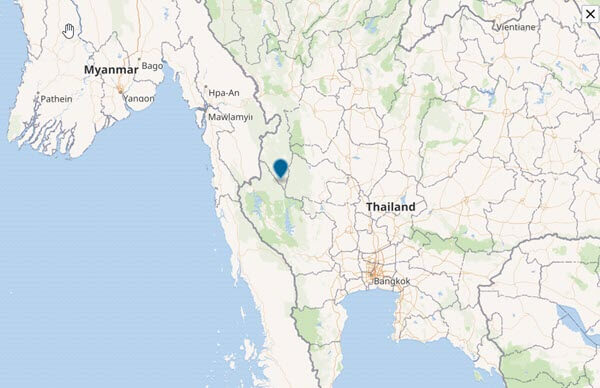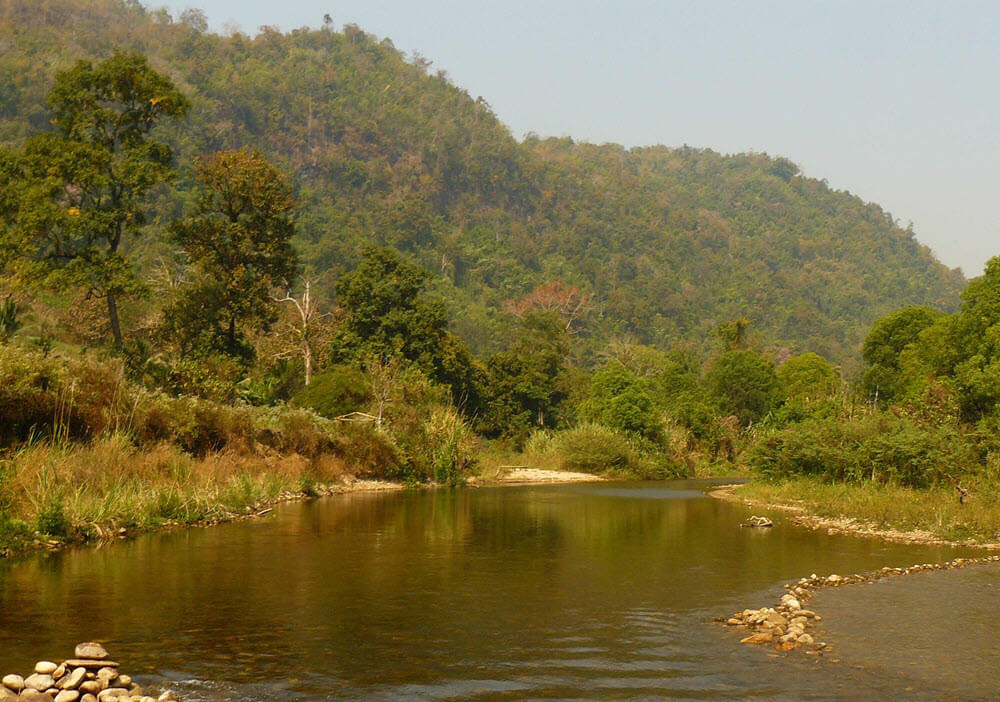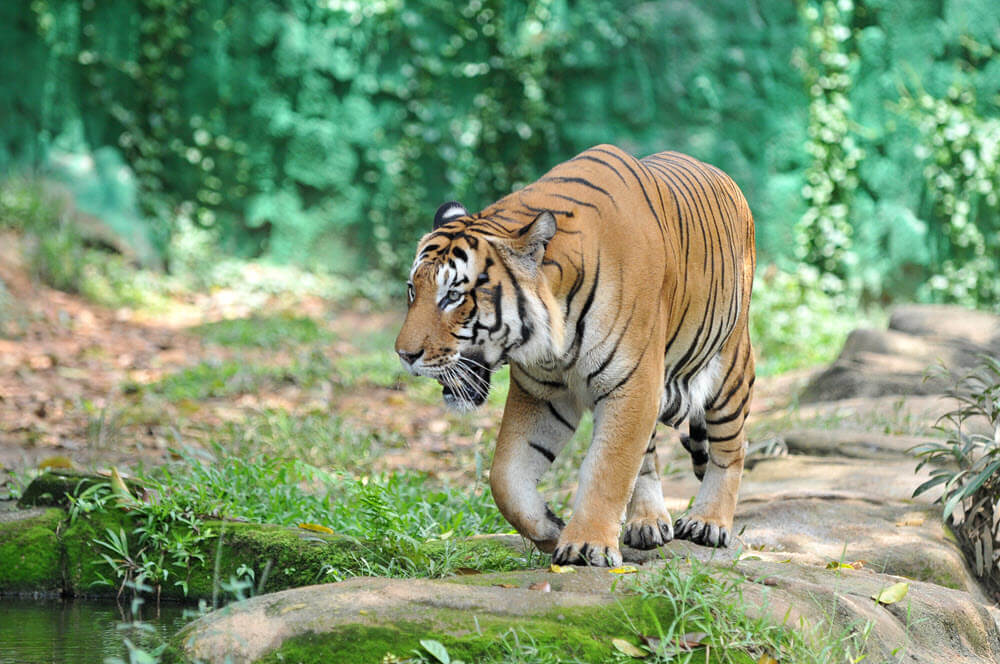A new Indochinese tiger conservation center was launched last month at the Huai Kha Khaeng Wildlife Sanctuary, located in the Uthai Thani and Tak provinces in western Thailand. Forest Rangers at the center will track the tiger and its prey, and protect the big cat against poachers.
Huai Kha Khaeng Wildlife Sanctuary was established in the early 1970s and declared a World Heritage Site by the United Nations in 1991. It was expanded twice in 1986 and 1992. Other animals that inhabit the sanctuary include the marbled cat,  wild water buffalo, gibbon, bear and elephant.
wild water buffalo, gibbon, bear and elephant.
“Hunting has taken a devastating toll on Indochinese tigers, native to Thailand and neighboring countries. They have disappeared from the forests of Vietnam, Cambodia, Laos and Myanmar. It has been a decade since one was last sighted in Cambodia, and in Vietnam the beautiful beasts have been hunted to eradication for their skin and bones,” says leading tiger researcher Anak Pattanavibool in an article about the center. “The western forest complex is our biggest hope.”
One of Southeast Asia’s Largest Sanctuaries
 Huai Kha Khaeng Wildlife Sanctuary is one of the largest protected wildlife areas in mainland Southeast Asia. The site is located in the Dawna range, a mountain range in eastern Burma and northwestern Thailand. The area is mostly hilly, with evergreen, semi-evergreen, deciduous, bamboo forests, several large rivers and grasslands.
Huai Kha Khaeng Wildlife Sanctuary is one of the largest protected wildlife areas in mainland Southeast Asia. The site is located in the Dawna range, a mountain range in eastern Burma and northwestern Thailand. The area is mostly hilly, with evergreen, semi-evergreen, deciduous, bamboo forests, several large rivers and grasslands.
More About the Indochinese Tiger
The Indochinese tiger has been listed as an endangered big cat since 2008. The largest population of Indochinese tigers (approximately 200-250 cats) is located in Thailand in and around the Huai Kha Khaeng Wildlife Sanctuary. The tigers live in hilly and mountainous areas, as well as forests and grasslands.
Indochinese tigers are smaller than Bengal and Siberian tigers. They have a darker color and their stripes are narrow, single and short. They prey on ungulates (hoofed animals) such as deer, wild boar, serow (wild goats) and wild cattle. Female tigers can have litters with up to seven cubs, but the average is one to three. The lifespan of an Indochinese tiger is 15 to 26 years.
Illegal trade is the biggest threat to the Indochinese tiger. The cats are being hunted and killed to extinction for their skins and body parts.


0 Comments